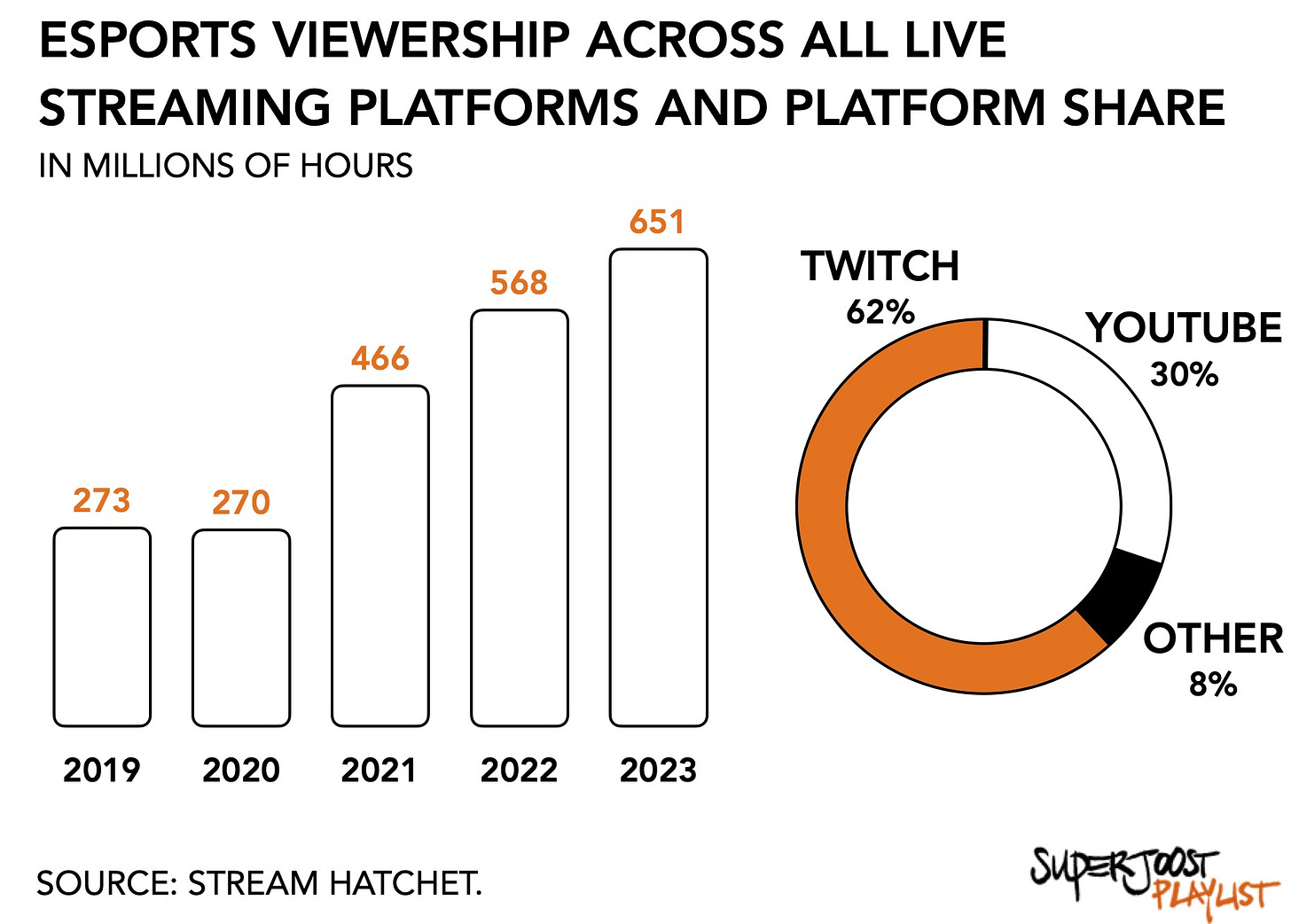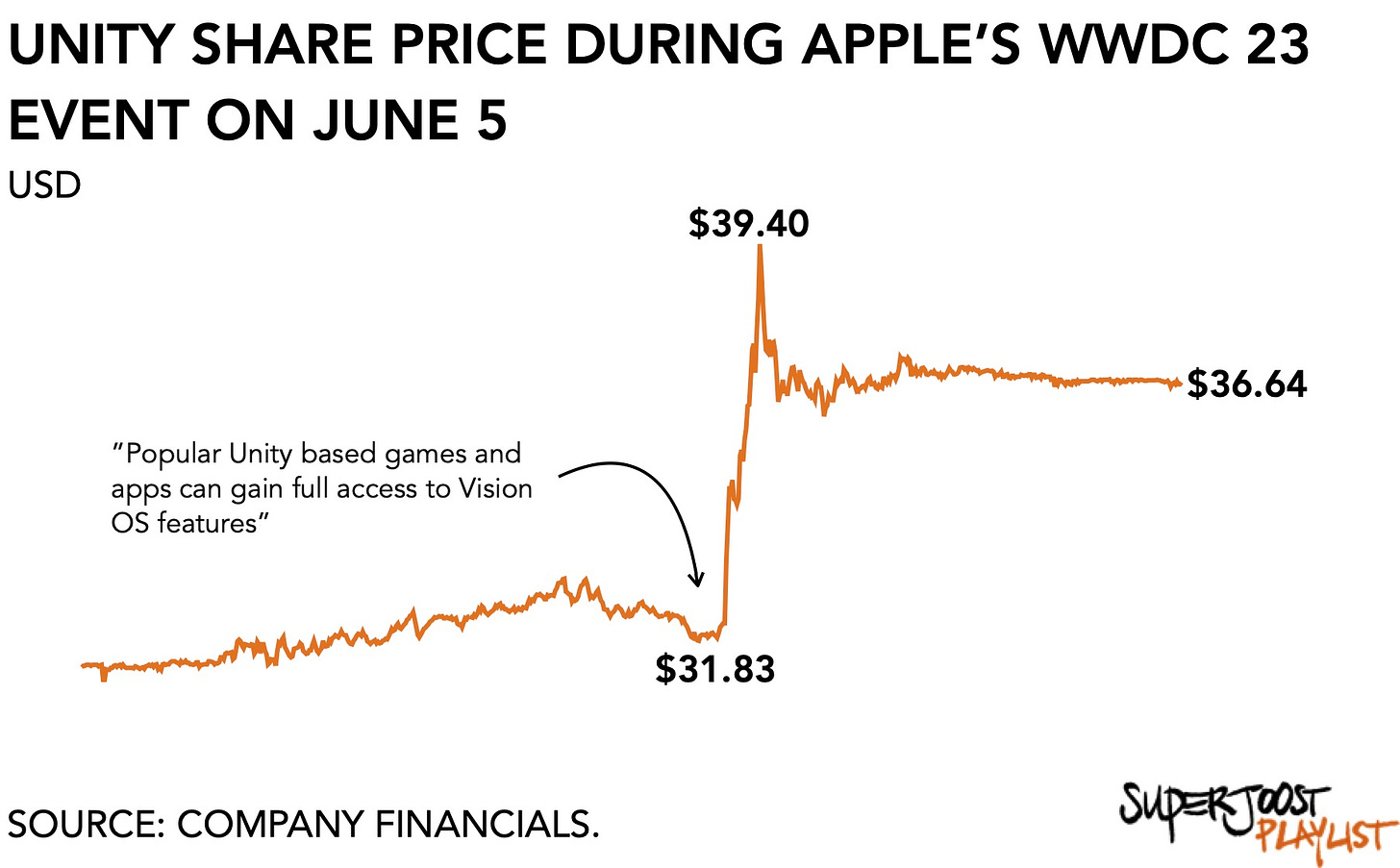The SuperJoost Playlist is a weekly take on gaming, tech, and entertainment by business professor and author, Joost van Dreunen.
The start of summer here in New York is hazy, but a few things are now clear.
With final grades submitted and NYU’s graduation ceremonies completed, I like to take stock of what occupied my students’ minds this past semester. Over time, I’ve found, they are a reliable proxy for early trend detection. The companies and topics they explore in their writing tell you what’s hot and what’s not. The 2023 Spring semester was no different.
Esports had long been a favorite. But it has started to lose preeminence. The number of papers written showed a drop, from almost half (45%) in 2021 to just 4 percent during this semester’s finals. It is why I was confident in my prediction back in January that 2023 would be esports’ lost year. And boy did that prove to be true. The sector has been bleeding money across the board and even the most popular teams have switched over to live-streaming more mainstream content to appease viewers and advertisers.
This week hammered two more nails into the esports coffin.
The first is the continued collapse of underlying economics at the hand of the major platforms. On Wednesday, Twitch updated its guidelines around branded content, disallowing logos bigger than 3 percent of screen size and banning “burned-in” video, display, and audio ads. God forbid the people creating content make a living.
It further restricts streamers’ ability to generate income, despite esports viewership on Twitch and YouTube reaching a new high of 651 million hours in 23Q1, up +15 percent compared to a year ago. Twitch continues to dominate and accounts for almost two-thirds (62%) of the overall market. And esports content makes up 30 percent of esports viewership on YouTube, “almost double that of its share of regular game live-streaming,” according to Stream Hatchet. Despite these growing numbers, platforms are finding new and innovative ways to line their own pockets without providing much support to talent. That can’t hold forever.
The second is a complete breakdown of decency at FaZe Clan, arguably one of the sector’s most prominent teams. After adding Stranger Things star, Grace Van Dien, to the roster, several existing and former members couldn’t help but show their immaturity. I’m not going to share any of that here. The only thing more painful to watch than FaZe’s financial problems is the misogyny that permeates its organization. Here’s a question: What does it say about you when even Snoop Dogg, no stranger to misogyny himself, resigns from your board of directors?
Sure enough, its NASDAQ listing was an exercise in fantasy finance riddled with buzzwords. But investors are grown-ups who are expected to manage their own financial interests and avoid irrational decision-making. On Wednesday, FaZe Clan traded at $0.56 a share, down from a high of almost $18 last September. Far more vexing is the persistent toxicity and inability to become a team that leads. It is a catastrophic missed opportunity.
Anyway, my students have long moved on. Instead, there is a notable increase in interest in digital fashion and apparel. The number of papers discussing potential market strategies for video game companies involving clothing brands has roughly tripled.
The presentation of oneself in digital environments is no different from the real thing, and increasingly people like to spend money on in-game assets (e.g., hats, clothes, weapons, mounts, pets) that communicate to others what they’re about. It is a matter of insignificance whether we are trying to impress others with real sneakers or with digital ones. Personalization and customization are latent forms of interpersonal communication. Every middle-schooler sporting a deck of Pokémon cards makes editorial choices that tell their peers who they are.
Based on the last batch of papers, the favorite fashion labels among my students are Louis Vuitton, Balenciaga, and Gucci, in that order. Higher education has high-brow taste. Across the board, they expect large blockbuster multiplayer titles to collaborate more with major fashion houses.
What most fashion brands have in common is that their ability to sell real-world clothing pales when compared to the sale of digital apparel by titles like Fortnite. In 2021, Epic Games generated $5.8 billion in revenues from in-game items. That may be the result of team Sweeney’s ability to generate clever, hilarious, and branded outfits you can wear and show off. It may also be the result of pent-up demand among gamers who’ve suffered through decades of “meaningless fashion” as one designer calls it, which catered to a homogeneous audience. As interactive entertainment starts to broaden its appeal, game design may finally resemble a more diverse range of interpretations and ideas. It makes Fortnite the second-largest seller of digital apparel with only Gucci selling more.
Digital fashion, however, goes well beyond what you may be used to. In April an AK-47 Case Hardened skin with four Titan Holos from Katowice 2014 sold for almost $500,000. It means little to me. But in the social context of popular shooter game CS:GO, it is a high-value item. And just last week, Nike announced its plans to launch an NFT-based integration “virtual creations” with Electronic Arts to enhance and personalize “the virtual sports experience.” (Sports integrations, both as video game adaptations or vice versa, was also a popular paper topic this semester.)
It reminds me of the time I spent explaining to legacy publishers that audiences would happily spend real-world money on digital in-game items. It has become standard practice around all of the major franchises today. For the next iteration, however, I anticipate novel ways to ensure that some virtual items are more desirable than others. Already Roblox is working on creating artificial scarcity for its user-generated content by requiring an upload fee from creators to discourage infinite production and restricting re-selling only to premium users and only after holding an item for at least 30 days.
Observing this transition away from esports and toward a greater focus on digital fashion in online games has made this a successful semester for me personally. More often than not, my students educate me rather than the other way around. It helps keep my mind clear, even if the whole seems shrouded in a haze.
On to this week’s update.
BIG READ: Apple’s Vision Pro: A tempered vision on the future
This week many of us suffered through Apple’s WWDC event, which spent a lot of time talking about things that no one wanted to know until, finally, it got around to its announcement and last-in-the-pool entry into augmented reality. The news of its Vision Pro galvanized those who had been previously enamored by the idea of virtual reality and the metaverse, pointing to the $3,499 scuba goggles as sheer validation.
Personally, I am 33 percent excited.
Yes, I, too, want to watch movies with separate lenses for each eyeball in blistering 4K resolution. Please burn that Avatar movie right into my fovea already. Different from existing devices, Apple’s entry seems much less a toy and more akin to professional hardware. More so, I anticipate a proliferation of in-home entertainment and activity. Scanning your living room and rendering experiences in it seems like it could be fun. The blurring of real and digital spaces is slowly becoming real. It’s uncanny, in fact, how Living Cities recently shifted from outdoor to indoor spaces where it can generate interactive experiences. It suggests a novel interpretation of entertainment and productivity that is more in tune with how many of us live and work today. Or at least how we would like to. The Vision Pro is as aspirational as you’d expect from a new Apple device. But is such a vision achievable?
Two aspects of the Vision Pro temper my excitement.
First, clearly, no one at Apple has children. Because who in their right mind would come up with glass goggles riddled with high-definition lenses and cameras, only to advertise it as a great way for your young brood to watch Disney movies? In my house, it will be covered in some kind of sticky substance within minutes, which will undoubtedly throw off its calibration. I envied the way Craig Federighi commanded an iPad to fly into his hand the same way that Thor calls his hammer (Mjölnir mode coming soon?), but in the absence of any casing, I find it entirely unconvincing. Also, who thought that SharePlay while driving with a bunch of kids in the backseat is something parents wanted? I fear, the same logic designed the Vision Pro. Am I going to have to buy a rubber casing? Is that even possible with all those cameras on it? Kids get hand-me-down phones; not top-of-the-line HD Disney goggles that shatter on impact.
The second thing that stood out was what wasn’t there. Mostly we saw people sitting down. Worse, the external battery seems like an area where Apple is going to gauge you. Sure it lightens the headset. But does it run warm? Can I take it on a plane? The same goes for the lenses. According to the Washington Post, two-thirds of people wear some type of glasses. Buying those lens adapters is likely going to cost me. It makes me feel we were presented with a dressed-down version. Getting a full kit with all the fixings will probably run much more than just $3500.
Another notable absence was gaming. Interactive entertainment featured heavily in the presentations of virtual reality by Meta, Valve, and Sony. Instead, the Cupertino firm focused on old-timey movies and linear, sit down and shut up entertainment. It suggests its skeuomorphic approach to virtual floating screens and a Mad Men-like Carrousel of fond memories will be its killer apps. Hm.
The battle for the next platform is one of attrition
A myopic focus on the device itself is to miss the broader implications. Does Apple’s participation truly validate augmented reality? Are we now in the era of spatial computing, as it calls it?
Apple has shown itself shrewd as ever. After Zuckerberg moved fast and broke a lot of things to gain a first-mover advantage, this week’s presentation must have been a bitter swallow. The showmanship alone blew right by Meta’s efforts despite costing 11.5 times more than the Meta Quest 2 ($299).
During the showcase, Apple also mentioned that Unity would support the device from day one. It’s a bit on the nose given Apple’s animosity with Epic Games and its Unreal Engine, which is notably absent. But Unity’s share price shot up from $31.83 the moment its name flashed across the screen to a high of $39.40 per share within minutes, as investors traded on the stock almost immediately.
Apple itself did not fair so well on Wall Street: it traded down -2 percent to $179 per share on the day of its event. It is unlikely to deter the firm, however, which promptly acquired an AR headset startup the day after. And Meta remained flat throughout the day, even though Apple presented a vision that made Zuckerberg’s legless avatars seem hokey at best.
The final die has been now cast. Whatever comes next is more likely to follow than lead, especially with Disney’s support. Apple’s announcement is expected to kickstart the next era in personal computing. Given the massive momentum required to transition to another platform, however, I anticipate most of this vision’s realization remains in the future, well beyond our gaze. The first iPhone was a coaster compared to how far the smartphone category has come. As far as the luxury consumer electronic manufacturer is concerned, we’re all in it for the long haul. After all, Tim Cook has only fathered neat accessories like EarPods. But this is a platform all his own.
What the Vision Pro tells us is that we had better get ready for several more years of augmented reality headlines while tech firms figure things out. I want one. I really do. But I fear that until Apple works out the kinks it’s best to keep my blinders on.
PLAY/PASS
Play. I was delighted to see the write-up on Prof. Kishonna Gray on Kotaku, describing her as a brilliant scholar who’s challenging racism in game design. Congrats!
Play. The Royal Philharmonic Orchestra’s annual trend report found that video games are a gateway to classical music, noting that 18% of children “listened to orchestral music as a soundtrack to a video game.”








